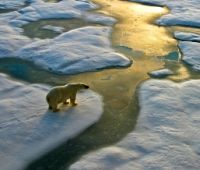

Studies have shown that sea levels over the last 20 years have risen by 11mm as a result of the melting of polar ice sheets.
The research, which was supported by US and European space agencies Nasa and Esa, brought together data from satellites measuring the surface altitude, the flow of the glaciers and the gravitational effect of the ice mass. From this, the first joint assessment of how the ice sheets are changing was produced.
The largest ice sheet which is East Antarctica actually gained mass between 1992-2011 because of snowfall, but Greenland, West Antarctica and the Antarctic Peninsula were all found to be losing mass.
Although the overall contribution from the ice sheets has seen a 11.1mm rise, there is a margin of error of 3.8mm, meaning the actual sea level rise could be between 7.3mm and 14.9mm. Any sea level rise is a danger to those living on low lying land.
The study also shows that polar melting has contributed about one-fifth of the overall global sea level rise since 1992. Other contributing factors include warming which causes the water to expand.
The lead author of the research, Professor Andrew Shepherd, said, "We can now say for sure that Antarctica is losing ice and we can see how the rate of loss from Greenland is going up over the same period as well."
The research was as a result of a collaboration between more than 20 polar research teams. Prof Shepherd added, "Prior to now there'd been 30 to 40 different estimates of how the ice sheets are changing, and what we realised was that most people just wanted one number to tell them what the real change was. So we've brought everybody together to produce a single estimate and it turns out that estimate is two to three times more reliable than the last one."